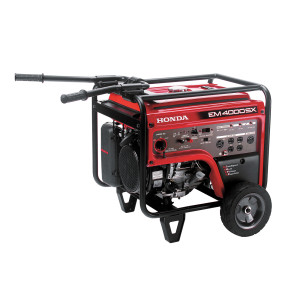Power management is a feature of many electrical appliances that conserves power when the equipment is not in use, or when the electrical appliance is using general running wattage. Certain advanced computers, laptops and other electrical equipment have a power management feature, and it is an important feature for extending the battery life of many of these appliances.
Author Archives: Admin
Honda Generator Comparison EB 5000 v EB 6500
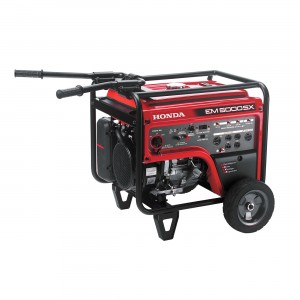 Honda has long been respected for its generators, which are in use at homes and businesses around the world. With the winter months in full swing, their utility becomes even more apparent for major businesses with heavy equipment that could become significantly damaged when exposed to extreme cold and other conditions. For those in heavier industries, the company offers its EB5000 and EB6500 generators for use. Both are powerful, long lasting, and able to easily adapt to virtually any commercial environment.
Honda has long been respected for its generators, which are in use at homes and businesses around the world. With the winter months in full swing, their utility becomes even more apparent for major businesses with heavy equipment that could become significantly damaged when exposed to extreme cold and other conditions. For those in heavier industries, the company offers its EB5000 and EB6500 generators for use. Both are powerful, long lasting, and able to easily adapt to virtually any commercial environment.
Honda Generator Parts Lookup Made Easy
 Most homeowners know that there’s really nothing worse than a power outage. A loss of electricity can damage electronics, cause food to spoil, and place an undue financial burden on any home. That’s especially true if the power stays out for several days at a time. In some cases, this can lead to heating or cooling problems that can further inconvenience and even harm a family.
Most homeowners know that there’s really nothing worse than a power outage. A loss of electricity can damage electronics, cause food to spoil, and place an undue financial burden on any home. That’s especially true if the power stays out for several days at a time. In some cases, this can lead to heating or cooling problems that can further inconvenience and even harm a family.
How to replace a Drive Pulley in a Honda Lawn Mower
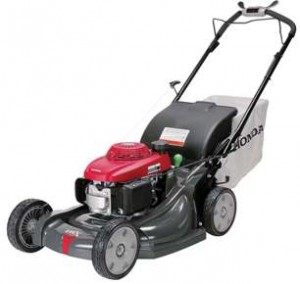 The drive pulleys featured in today’s Honda lawn mowers are key to making sure those mowers continue forward during the actual mowing process. These pulleys typically control either the actual mower belt itself, or the forward propulsion of the mower. When the drive pulley stops working or has malfunctioned, the mower itself can be come quite difficult to use. The blades may stop working as expected, and its forward movement may stop altogether. That can make even the most basic mowing job quite difficult for homeowners of all kinds.
The drive pulleys featured in today’s Honda lawn mowers are key to making sure those mowers continue forward during the actual mowing process. These pulleys typically control either the actual mower belt itself, or the forward propulsion of the mower. When the drive pulley stops working or has malfunctioned, the mower itself can be come quite difficult to use. The blades may stop working as expected, and its forward movement may stop altogether. That can make even the most basic mowing job quite difficult for homeowners of all kinds.
Honda HS 621 Snowblower Overview
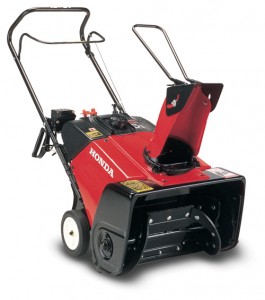 The Honda HS621 snowblower is an auger-assisted drive model with a 4-stroke Honda GX160K1 engine that delivers 5.5 horsepower at 4,000 rpm. It has a 21” clearing width and a maximum snow throwing distance of 32.8 feet. With a continuous operating time of 1.4 hours, the HS621A model is equipped with a recoil starter, while the HS621AS model is equipped with an electric starter. This model weighs in at 91.5 pounds, with a 48.4 x 22.4 by 38.6 inch frame. Continue reading
The Honda HS621 snowblower is an auger-assisted drive model with a 4-stroke Honda GX160K1 engine that delivers 5.5 horsepower at 4,000 rpm. It has a 21” clearing width and a maximum snow throwing distance of 32.8 feet. With a continuous operating time of 1.4 hours, the HS621A model is equipped with a recoil starter, while the HS621AS model is equipped with an electric starter. This model weighs in at 91.5 pounds, with a 48.4 x 22.4 by 38.6 inch frame. Continue reading
How to Operate a Honda HS1366i Snowblower (Part 1 of 2)
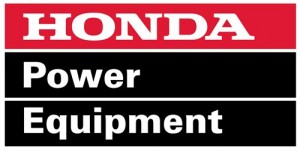 Those new to the Honda HS1366i snowblower can easily be intimidated when the time comes to adjust the controls, switch the engine on, and get started with regular operation. This process is actually pretty easy, however, and requires only a few basic precautions, guidelines, and procedures. This two-part series will focus on how to properly prepare the snowblower for use and then put it into operation around the home during the first big snowfall of the season. Continue reading
Those new to the Honda HS1366i snowblower can easily be intimidated when the time comes to adjust the controls, switch the engine on, and get started with regular operation. This process is actually pretty easy, however, and requires only a few basic precautions, guidelines, and procedures. This two-part series will focus on how to properly prepare the snowblower for use and then put it into operation around the home during the first big snowfall of the season. Continue reading
How to Change a Snowblower Tire
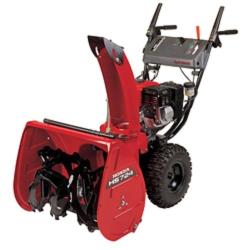 Honda snowblowers are remarkably durable and able to survive winter with relatively little maintenance required from the homeowner. Sometimes, the combination of debris and rough snow or ice can negatively impact the equipment’s tires. After a few seasons of tough snow clearing, it becomes necessary to change these tires in order to ensure good traction and snow clearing in the future. HondaLawnParts.com provides Honda Snowblower Tires, which equipment owners can easily replace by following a few simple steps.
Honda snowblowers are remarkably durable and able to survive winter with relatively little maintenance required from the homeowner. Sometimes, the combination of debris and rough snow or ice can negatively impact the equipment’s tires. After a few seasons of tough snow clearing, it becomes necessary to change these tires in order to ensure good traction and snow clearing in the future. HondaLawnParts.com provides Honda Snowblower Tires, which equipment owners can easily replace by following a few simple steps.
Honda Power Equipment Model Identification Guide
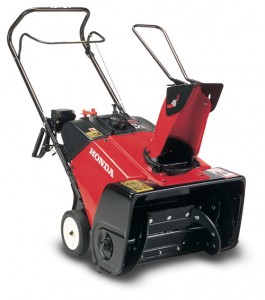 Honda Power Equipment has a reputation of quality and dependability. Honda machines are built to last; however, there will come a time when you need to order a replacement part or have your product serviced. When this happens, you will need to know the model number of your particular piece of equipment. The following paragraphs are meant to guide you in locating the model number for your product, address certain scenarios where you will need your model number, and instruct you on how to gain further information about your particular model.
Honda Power Equipment has a reputation of quality and dependability. Honda machines are built to last; however, there will come a time when you need to order a replacement part or have your product serviced. When this happens, you will need to know the model number of your particular piece of equipment. The following paragraphs are meant to guide you in locating the model number for your product, address certain scenarios where you will need your model number, and instruct you on how to gain further information about your particular model.
How to Locate Your Model Number
The location of your model number will vary based on what type of equipment you have. The majority of model numbers are printed on a sticker or ID plate and attached somewhere on the outer surface of the product. Also, each type of equipment has a common set of beginning letters in the model number that may make it slightly easier to identify.
Model numbers on commercial mowers begin with “HRC”, such as HRC215, HRC216, HRC7113, and HRC7018/7020. Consumer lawn mowers have model numbers that begin with “HRB”, such as HRB216HXA. Model numbers on general purpose engines begin with “G”, such as G100, GX610, and GXV160. Generators have model numbers that begin with “E”, such as EB500, EU1000i, and EG5000. Model numbers on hand held products follow the Honda logo somewhere on the product, such as Honda HHT315. Model numbers on power carriers are generally located on a red sticker following the Honda logo somewhere on the product, such as Honda HP400. Pumps have model numbers that begin with “W”, such as WD30, WH15, and WDP30, and are generally located on the engine’s recoil starter or fuel tank. Riding equipment has model numbers that are generally on the engine hood or above the rear wheels. Model numbers on 2-stage model snowblowers are generally located on the back of the frame or the lower handle bar, and those on single-stage model snowblowers are generally located on the right side of the frame or the rear axle. Tillers have a model number ID tag that is generally located behind the engine on the debris shield.
If you experience any difficulties with locating the model number on your product, you can contact your Honda Power Equipment experts at www.hondalawnparts.com.
Situations That Require Your Model Number
There are certain situations where your model number will be required. If you experience problems with your equipment, you will need your model number to assist you in receiving services or ordering replacement parts. In order to get your equipment inspected, diagnosed, and repaired at your local Honda Power Equipment servicing dealer, such as Hondalawnparts.com, they will need your model number. You can purchase replacement parts for your Honda equipment through www.hondalawnparts.com.
How to Gain More Information about Your Model
If you need more information about your particular model, you can download or purchase a copy of your Owner’s Manual at http://powerequipment.honda.com/support/owners-manuals/lawnmowers. Paper copies of your Owner’s Manual can be purchased through your local Honda Power Equipment servicing dealer. For more information on your particular model, you may also want to purchase a Service Manual and Parts Catalog, which may also be purchased through your local Honda Power Equipment servicing dealer. You can also gather further information about your particular model with a brochure, which can be ordered at http://powerequipment.honda.com/brochures.
As you can see, your model number is a very important piece of information about your product that will be necessary in many situations, especially when you need to have your equipment serviced or purchase replacement parts. Therefore, it is important to know how to identify your model number, as well as how to acquire additional assistance in doing so if needed. For more information, feel free to visit http://powerequipment.honda.com/support/frequently-asked-questions.
Honda Snowblower Safety Tips
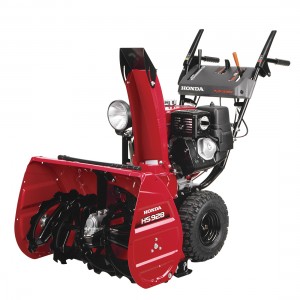 Homeowners everywhere are preparing for the upcoming winter season, and that means many people are putting their Honda snowblower through the maintenance steps that come before each season of snow, ice, and sidewalk clearing. Amid all of this maintenance, though, one key area often gets overlooked: safety.
Homeowners everywhere are preparing for the upcoming winter season, and that means many people are putting their Honda snowblower through the maintenance steps that come before each season of snow, ice, and sidewalk clearing. Amid all of this maintenance, though, one key area often gets overlooked: safety.
How to Change the Oil in a Honda Snowblower
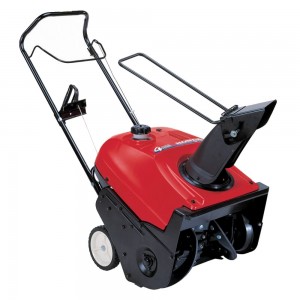 With winter rapidly approaching, many homeowners are beginning to dig out their snowblower from the back of the garage or tool shed and go through the typical maintenance checks that must be done before it is first used on a major snow accumulation. Continue reading
With winter rapidly approaching, many homeowners are beginning to dig out their snowblower from the back of the garage or tool shed and go through the typical maintenance checks that must be done before it is first used on a major snow accumulation. Continue reading

